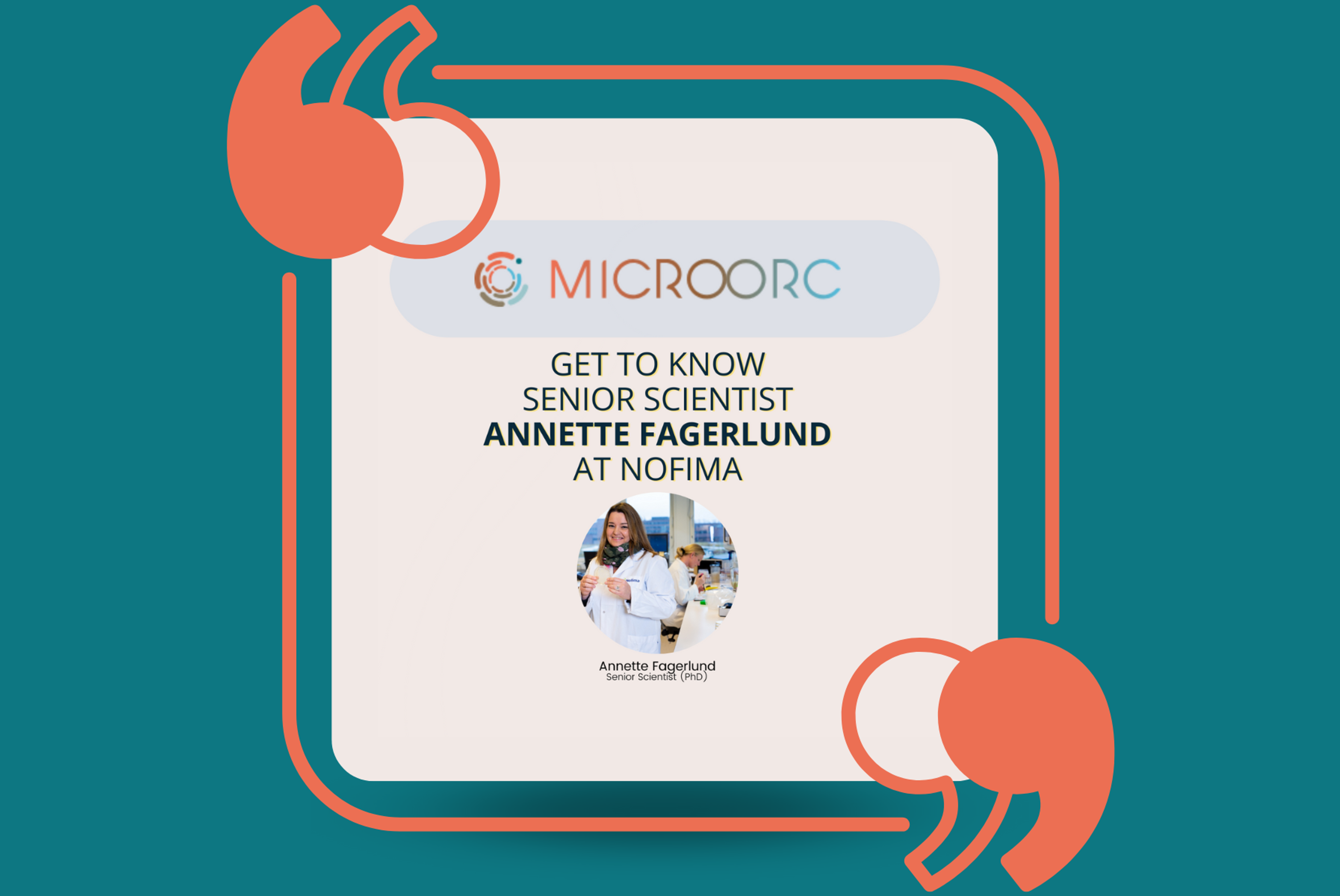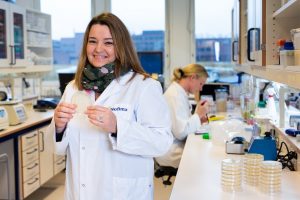
An important field in MICROORC is the research on microbiome-based technological developments for shelf life prediction. This work is led by Senior Scientist Annette Fagerlund at Nofima. We have asked her to tell us briefly about herself, what makes her think MICROORC is so important, what work is to be done in the work package she leads and what impact she imagines the project will have.
Annette Fagerlund is in charge of the work package ‘Business solutions for shelf-life prediction and labelling’, which is MICROORC work package 2 (WP2).
Tell us about yourself
I am a Senior Scientist at the department of Food Safety and Quality at Nofima. I work in the field of molecular food microbiology and have expertise in the application of molecular biological methods and bioinformatics.

How and why did you join the MICROORC adventure?
I was responsible for putting together the MICROORC proposal along with the Project Coordinator Solveig Langsrud. The idea was a project that would use new technologies to monitor and control themicrobes in specific food processing environments. The research question was whether microbial status at the point of consumption can be predicted early in the processing chain.
Writing the proposal was challenging but rewarding. It is very satisfying to have been able to put together a project which joins together different relevant scientific fields such as shelf life, packaging, food cultures, regulatory issues, consumer perceptions and sustainability, as well as having both the food and tech industry on board as fully integrated partners.
We really feel that everyone pulled together and that we ended up with a really great Consortium. Thanks to everyone that made this happen!
Can you explain the work that will be carried out in your Work Package?
We will focus on three main microbiome-based technological developments:
- predictive analytics models incorporating microbiome information to predict shelf life
- sensor and smart label solutions for dynamic shelf life labelling
- rapid detection assays for microbial indicators of food spoilage.
Our selected case studies are chicken fillets and salmon fillets, which were chosen as they are perishable and high-value products where the shelf life is limited by microbiological concerns, and a major contributor to the environmental footprint of EU food waste. The overall aim is to develop and test tools and solutions to improve the microbial quality and safety of perishable foods to address food waste.
We have already performed a first test round of microbial environmental sampling and shelf life studies in three different factories, namely Norsk Kylling, Lusiaves, and Cermaq. The next step will be to run several rounds of sampling, combine the data with other types of factory data meanwhile developing and testing the technological solutions.
The work will give us a deeper understanding of the microbiomes in food and food production, as well as tools and solutions that can improve shelf life and thereby reduce food waste.
What is your vision on reducing food waste for the next 10 years?
My vision is that food waste caused by microbial spoilage will be considerable reduced, and foodborne outbreaks may also be avoided.
What is your ambitions for MICROORC?
I aspire for the project to have a tangible impact towards a more sustainable Europe, by serving a significant role in developing technologies for improving shelf life prediction for perishable foods and hence reducing food waste.
Facts about Nofima:
Nofima is a Norwegian leading food research institute that conducts research and development within the fields of aquaculture, fisheries, and food. Our largest owner is The Ministry of Trade, Industry, and Fisheries in Norway. We have 397 employees with 42 different nationalities. 165 of these have a doctorate degree. 2023 turnover was NOK 721 million. Nofima is the Coordinator of MICROORC.
 Funded by the
European Union under Grant Agreement N° 101136248. Views and opinions expressed are however those of the
author(s) only and do not necessarily reflect those of the European Union or REA. Neither the European
Union nor REA can be held responsible for them.
Funded by the
European Union under Grant Agreement N° 101136248. Views and opinions expressed are however those of the
author(s) only and do not necessarily reflect those of the European Union or REA. Neither the European
Union nor REA can be held responsible for them.